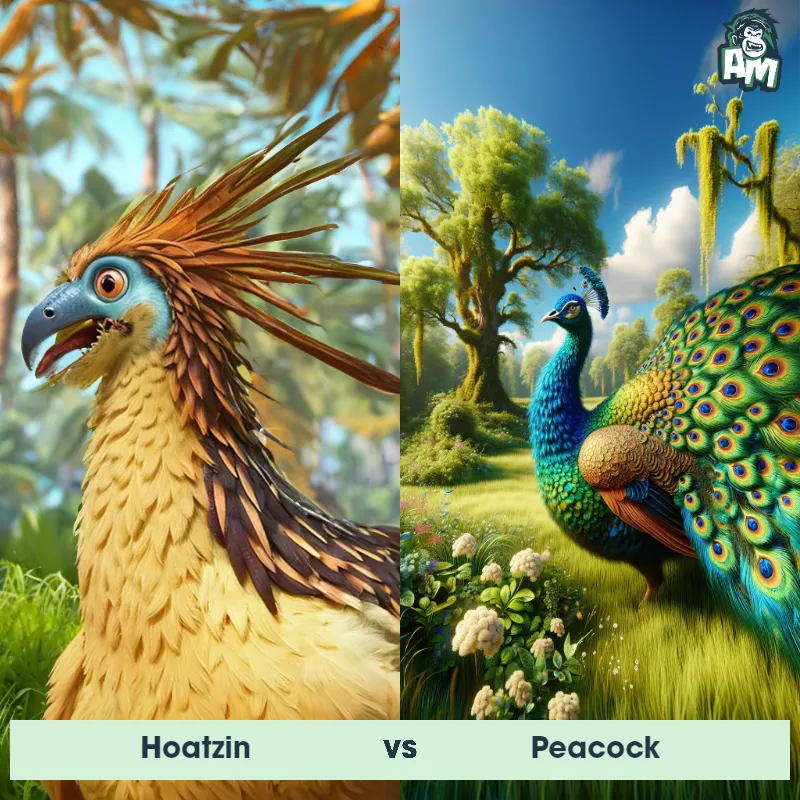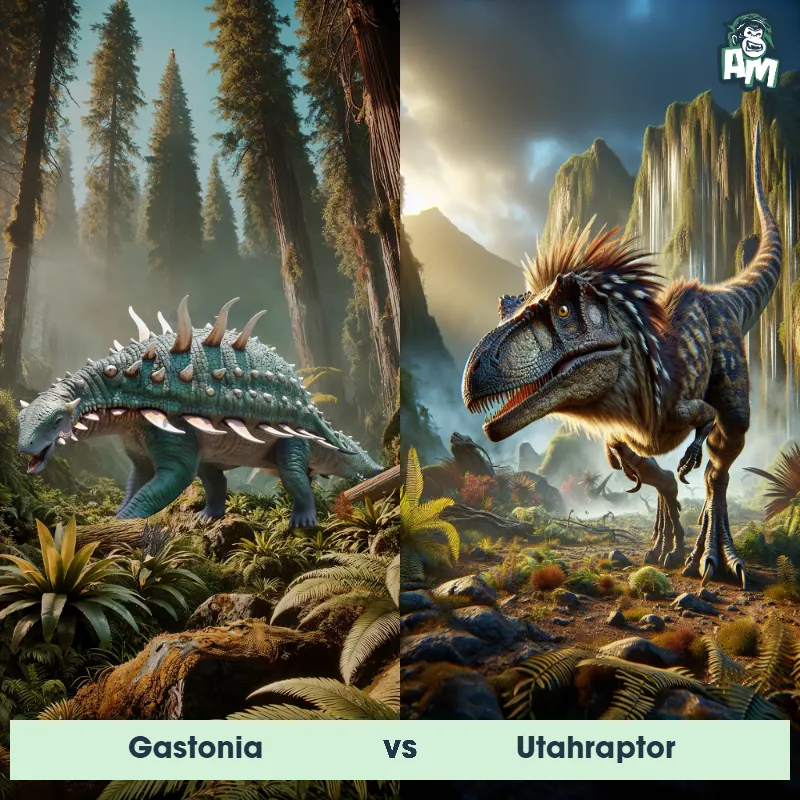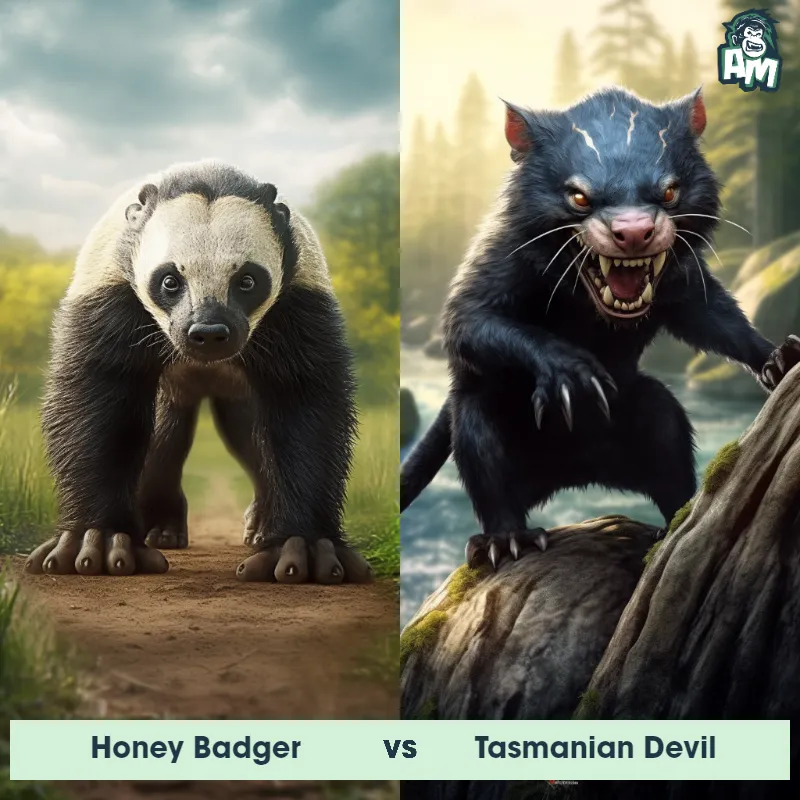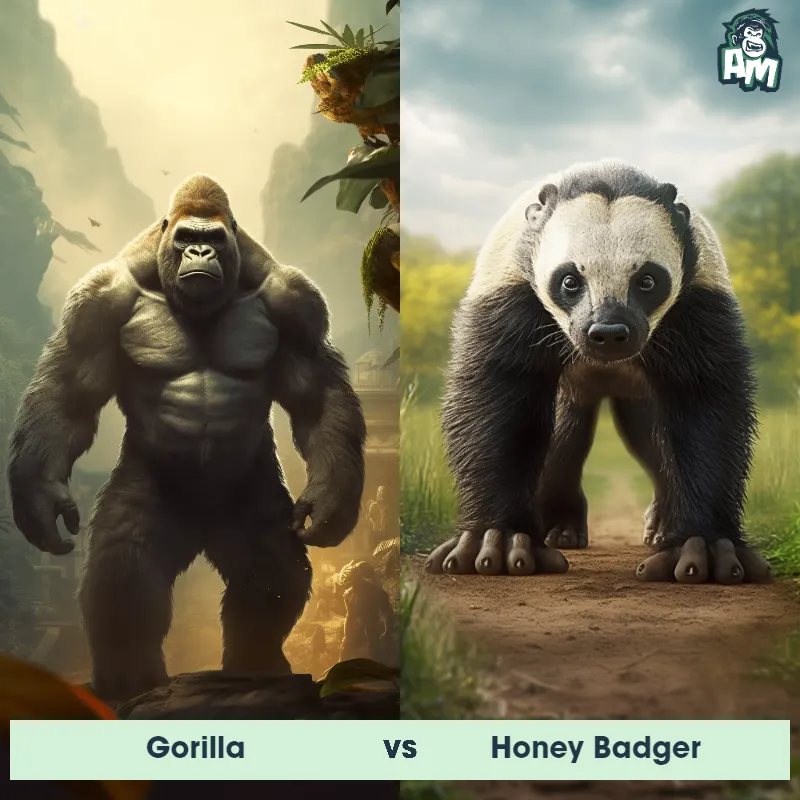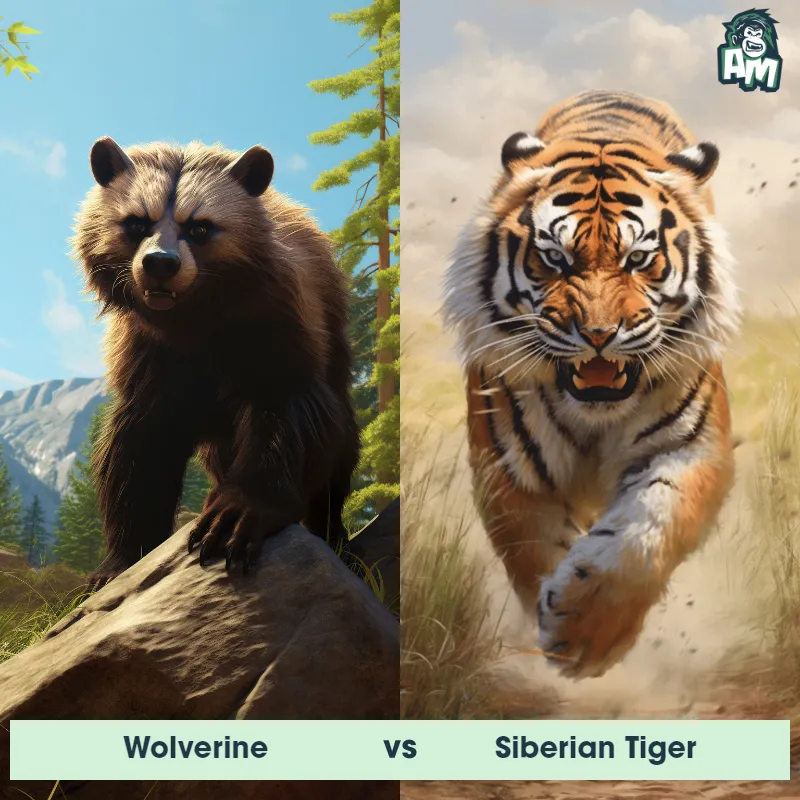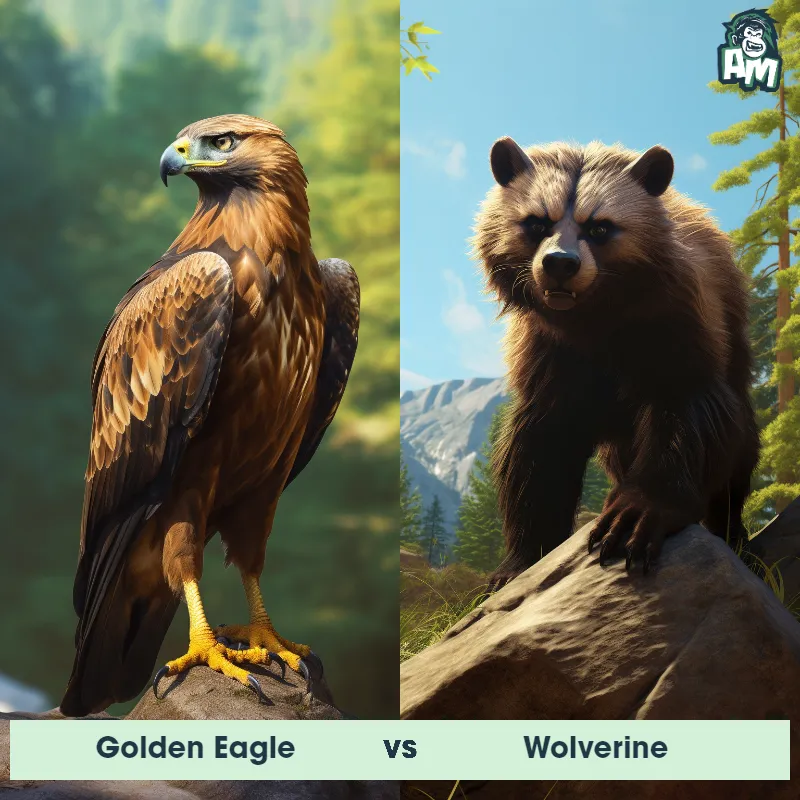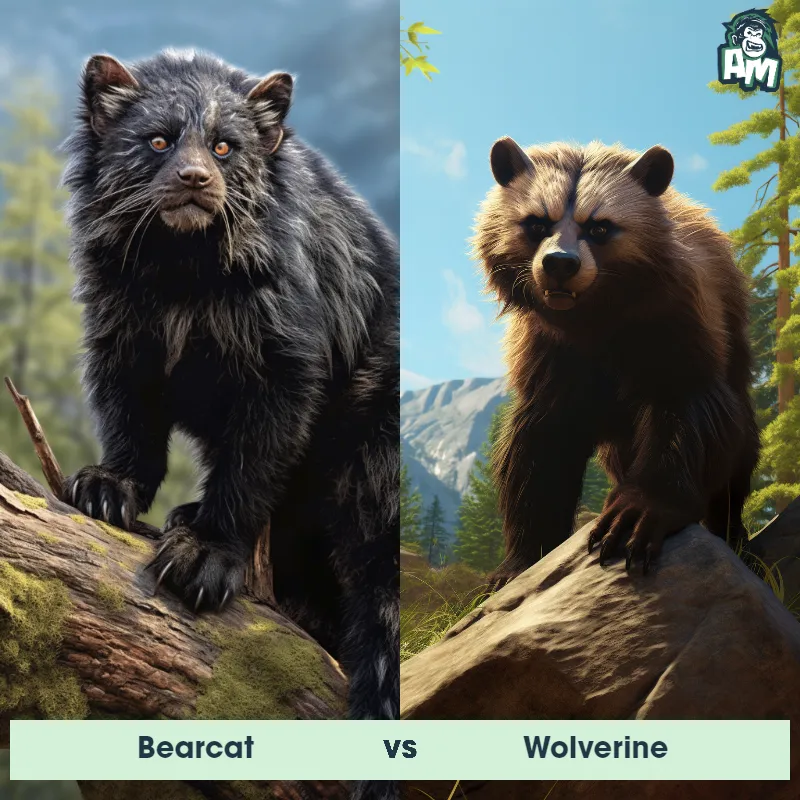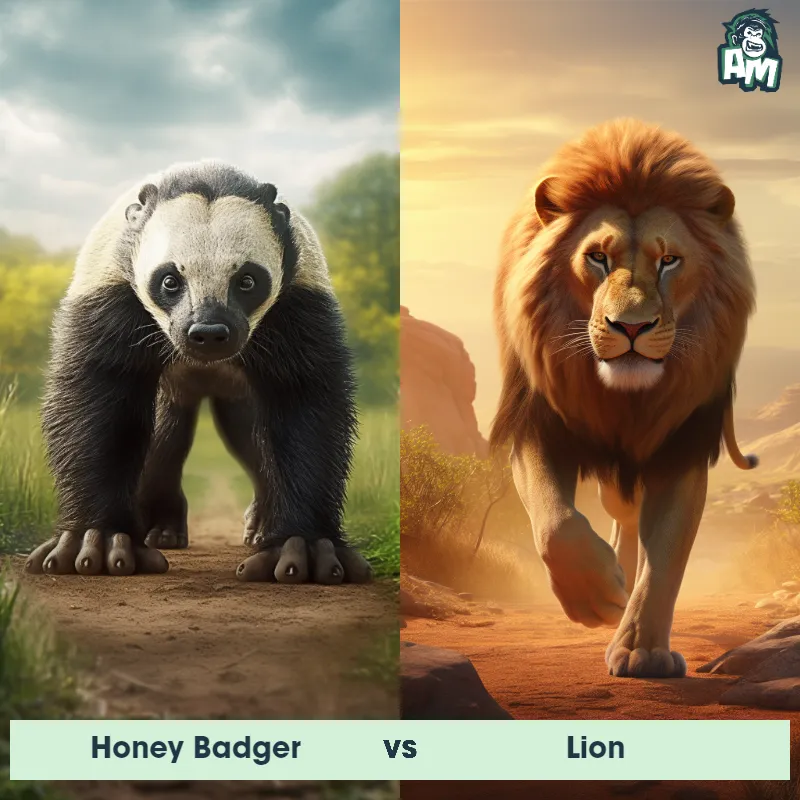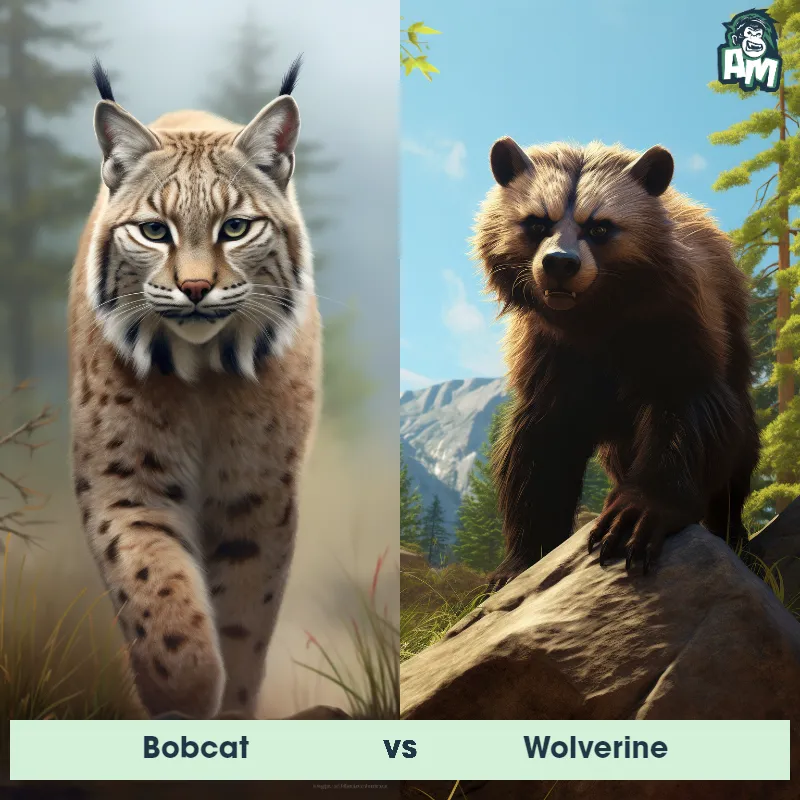Honey Badger vs SkunkSee Who Wins

Ladies and gentlemen, welcome to the electrifying showdown here at the Animal Matchup arena! We've got an intense matchup tonight between two fierce competitors. In the red corner, weighing in at a mere 20 pounds, we have the untamed Honey Badger. And in the blue corner, weighing in at a similar 18 pounds, we have the naturally aromatic Skunk. These animals may be small, but don't let their size fool you - they're about to bring the heat!
Contender 1: Honey Badger
The Honey Badger, also known as the ratel, is a small carnivorous mammal found in Africa, Southwest Asia, and the Indian subcontinent. They have a stocky build, with a broad head, powerful jaws, and sharp claws. Their fur is thick and coarse, ranging in color from gray to black with a distinctive white stripe on their back. Honey Badgers are known for their fearless and aggressive nature, often taking on animals much larger than themselves, such as lions and hyenas. They are also known for their ability to withstand venomous snake bites and their love for honey, which they obtain by raiding beehives.
Fun Fact: Honey Badgers have been known to dig up and eat buried human corpses, earning them the nickname "the world's most fearless animal."
Contender 2: Skunk
The skunk is a small to medium-sized mammal best known for its ability to secrete a pungent odor when threatened. Skunks are identifiable by their black fur with a distinctive white stripe that runs down their back and tail. They have a small head, short legs, and a bushy tail. Skunks are omnivores and feed on a varied diet, including insects, small rodents, fruits, and plants.
Fun Fact: Skunks are not as indiscriminate with their spray as people often believe; they can accurately spray their scent at a target up to 10 feet away.
Matchup Stats
| Honey Badger | Skunk | |
|---|---|---|
| Size | 25-30 inches (63-76 cm) in length | 8-19 inches (20-48 cm) |
| Weight | 19-26 pounds (9-12 kg) | 1.1-14 lbs (0.5-6.3 kg) |
| Speed | Speed: 20 mph (32.19 km/hr) | 10mph (16km/h) |
| Key Strength | Powerful jaws and sharp claws | Ability to spray a pungent odor |
| Biggest Weakness | Short legs and small size | Limited spray range (up to 10 feet) |
Current Votes
Honey Badger vs Skunk
See Who Wins
View More Matches
Looking For More?
Similar Matches
Scientific Stats
| Honey Badger | Skunk | |
|---|---|---|
| Scientific Name | Mellivora capensis | Mephitidae |
| Family | Mustelidae | Carnivora |
| Habitat | Terrestrial | Forests, grasslands, and suburban areas |
| Geography | Africa, Southwest Asia, and the Indian subcontinent | North and South America |
| Diet | Carnivorous, eats small mammals, birds, reptiles, insects, and honey | Omnivorous (insects, small rodents, fruits, and plants) |
| Lifespan | 24 years - 26 years | 2 years - 10 years |
Key Differences between Honey Badger and Skunk
- Size: The Honey Badger typically weighs between 9 and 26 pounds and measures around 25 to 35 inches, while the Skunk is generally smaller, weighing between 4 and 14 pounds and measuring around 15 to 18 inches.
- Tail: The Honey Badger has a tapered, non-bushy tail, shorter in length compared to its body, while the Skunk possesses a large and fluffy tail, which often plays a role in its defense mechanism.
- Color: Honey Badgers exhibit a wide range of colorations, including shades of brown, gray, and black, with a distinctive white dorsal stripe, whereas Skunks are predominantly black with white markings, usually in the form of two parallel stripes running from the head to the tail.
- Habitat: Honey Badgers are mainly found in sub-Saharan Africa and parts of the Indian subcontinent, inhabiting a variety of habitats including forests, grasslands, and even deserts, whereas Skunks are native to the Americas, with different species found across North, Central, and South America, adapting to a range of environments such as forests, fields, and even urban areas.
- Ears and Facial Features: Honey Badgers have small and rounded ears, typically not prominent, combined with a short and broad snout, whereas Skunks have more visible and elongated ears, as well as a longer snout.
- Body Shape: Honey Badgers have a stout and powerful build, with a stocky body and short legs able to support their burrowing behavior, while Skunks have a more elongated and slender body shape with relatively longer legs.









